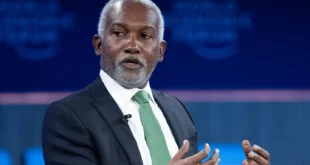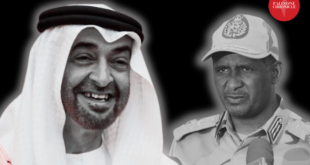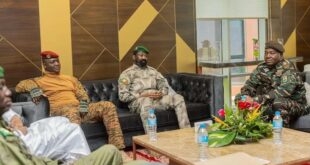A strong, internationally composed military force remains crucial to protecting the Somali government and preventing a victory by the Al-Shabaab Islamist militant movement.
Last month, the African Union (AU) offered four separate options for the future of the African Union Mission in Somalia (AMISOM) to the Somali Federal Government (FGS). Since the late 1980s the Somali civil war has taken many twists and turns. In 2008–2009, Al-Shabaab emerged as the principal Islamist militant opponent to the weak Somali transitional government. AMISOM originally arrived in 2007 with a mandate to protect the Somali transitional political institutions, partially to compensate for withdrawing Ethiopian troops. After Al-Shabaab withdrew from Mogadishu in 2011, AMISOM began a long expansion which has seen a number of significant urban centres in southern Somalia liberated, as well as some of the countryside.
Given that AMISOM has been fighting in Somalia for nearly 14 years now, it is worth reassessing how military security can continue to be provided with a separate, capable force that the Somali National Army (SNA) can supplement, as well as which of the current troop contributors may wish to stay with AMISOM and why.
Deteriorating Security Situation
Southern Somalia is now a ‘Swiss cheese’ of isolated government townships, rural clans, Al-Shabaab and relative power vacuums. The FGS’s focus on installing allies in three of the regional Federal Member State presidents’ offices, deep clan cleavages among the SNA, rising SNA politicisation and the diversionary factor of the planned elections have led to a growth in Al-Shabaab’s power. It holds a large territorial enclave in Middle Juba; continues to isolate outlying towns such as Huddur; and exploits the lack of routine, systematic patrolling from either AMISOM or Somali forward positions.
As the UN Panel of Experts pointed out in its latest terrorist groups report to the Security Council, during the first half of 2021, ‘[Al-Shabaab] encountered little resistance in capturing several towns and villages in areas that had previously been hostile… [the] United States military withdrawal and the partial drawdown of the African Union Mission in Somalia left Somali special forces struggling to contain Al-Shabaab’. Infiltration of Al-Shabaab in the capital Mogadishu – always a factor – has reached new heights. It appears that the city would fall relatively quickly if AMISOM was withdrawn. International military advisors interviewed by the BBC have said that Al-Shabaab’s seizure of the city could take as little as 12 hours, though a period of days or weeks seems more likely.
Al-Shabaab’s leaders have called for attacks on Americans, not only in the region, but in the world and in the US homeland. I believe we should take these threats seriously.
General Stephen Townsend, Commander, US Africa Command, speaking in June 2021
All of this shows why a separate, capable military force assuming the leading role – which the politicised and divided SNA can only hope to support – remains critical. AMISOM military planning – how the mission aims to achieve its objectives – has generally been carried out by the AU and the troop-contributing countries, supported by a variety of mostly Western advisors. Yet some of the previous products of this planning, such as the 2018 Concept of Operations, which relied upon a Somali Transition Plan that was in turn dependent on the SNA becoming effective, has been deeply unrealistic. At times, such planning has been more about justifying further international funding than providing workable concepts. There have been private suggestions from troop-contributing countries that such withdrawal plans were in fact seen as prods to incentivise improved Somali military performance.
Available Options
Over the last few months, an independent assessment team has been reviewing options for AMISOM’s future. When the team presented its report, the recommendation was for a reconfigured AMISOM, rather than a UN–AU hybrid force. This was wise; whether or not a UN–AU hybrid mission would improve matters, it seems likely that much AU and UN attention, time and effort over many months would be diverted to establishing the hierarchies of the new hybrid mission, rather than assisting the Somalis. In addition, it is generally agreed that the UN is not the best organisation to carry out an intense combat mission. Two further options – the deployment of the Eastern Africa Standby Force and the total withdrawal of AMISOM – were also deeply unrealistic, and were rejected in their turn.
The FGS rejected the report in its entirety, possibly in order to gain more leverage as a prelude to serious discussions on AMISOM’s future. The reported FGS justifications were unrealistic, asking for AMISOM to supply mobile forces and fall back to providing only a supporting role. AMISOM ensures that many troop positions on the ground are held (as does the SNA); if AMISOM were to revert to a mobile supporting role, Al-Shabaab would seize even more territory, and consequently gain a further advantage.
The rejection of the report put the onus for the next series of actions back onto others. But beyond the AU itself, perhaps the parties with the strongest influence on AMISOM are the troop-contributing countries. Whatever money international donors provide, there have to be troops there to provide a military effect, and whether or not those troops stay is, in the end, the decision of the troop contributors.
The Contributing Countries
So, what do the troop contributors want? Both Kenya and Ethiopia had troops in Somalia before they joined AMISOM in 2012 and 2014, respectively; they later ‘re-hatted’ these troops, placing them under AU command. Ethiopia has a long history in Somalia and its troops have been in and out of the country since the late 1990s. Both countries appear to have been influenced to ‘re-hat’ their troops by the financial advantages of having donors pay for their presence. Additionally, it provided further outside legitimacy for their troops remaining in Somalia, even if they would remain principally responsive to instructions from their national capitals rather than the AU.
Seven years later, feelings of frustration with the SNA have been expressed both privately and publicly. Genuine Somali military effectiveness is as far away as ever. Thus, Kenya is putting in place measures to secure its border without needing Kenyan soldiers inside Somalia. It is also dispatching both line infantry and special forces to the Congo, which will keep its army busy, engaged and funded through UN revenues.
There are thus several indications that Kenya is making preparations to withdraw from Somalia in its own time – perhaps in the next 12–24 months – though not quite yet. Ethiopia will wish to maintain troops inside the country, as it has for decades. The Ethiopian Army has been devastated by the war in Tigray, with up to 150,000 deaths being reported. With funding also under severe strain, continued troop pay from other sources will be welcome.
In 2019, Ugandan President Yoweri Museveni threatened to withdraw his country’s troops from AMISOM if the UN insisted on reducing the number of troops involved in the mission. Uganda is among the troop contributors now advocating that the mission be reconfigured as a hybrid AU–UN mission – that is, endorsing the force staying in Somalia. It appears that Museveni is still motivated by the rewards accrued on the world stage from providing troops, and by the money that helps fund the Ugandan military. Uganda is also deeply invested in the mission as a matter of pride, having been involved from the outset in 2007. Burundi and Djibouti’s actions will be influenced by the larger troop contributors. In particular, it seems likely that Djibouti will stay as long as its generally passive forces can be protected by the Ethiopians.
In summary, Al-Shabaab remains strong, and AMISOM remains the crucial military force preventing its victory and protecting the Somali government. The mission will remain in Somalia into next year, and probably for several – or perhaps many – years into the future. Similar missions in the Congo and South Sudan are heading into their 20th and 16th years, respectively; and the US is only now pulling out of Afghanistan at the 20-year mark. AMISOM will probably remain an AU rather than AU–UN hybrid mission. The troop-contributing countries have perhaps the greatest influence over the future of the mission, and it appears – with the possible exception of Kenya – that most are in it for the long haul.
 Eurasia Press & News
Eurasia Press & News



